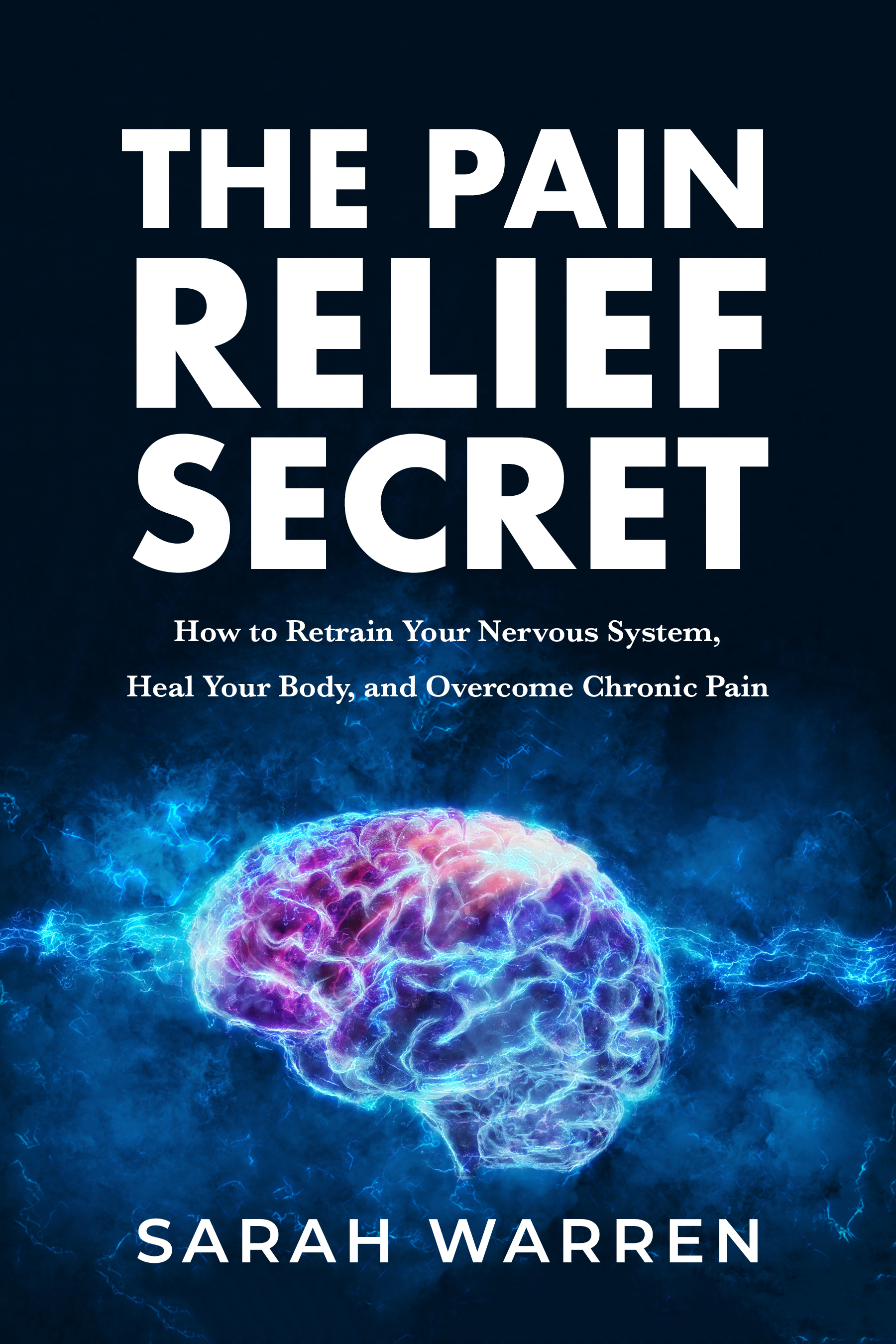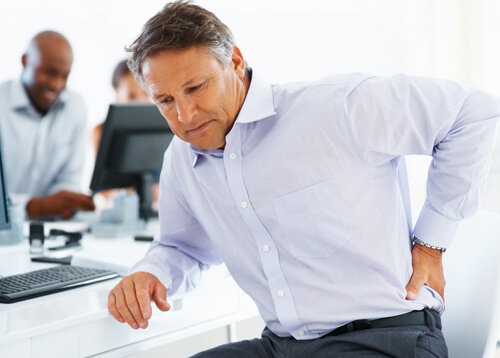Why We’re in Pain
It’s not an understatement to say that we have a health epidemic in our country: an epidemic of lifestyle-related conditions that includes heart disease, diabetes, obesity, and chronic pain.
By and large, these conditions can be prevented, alleviated, and often completely eliminated with proper self-care. So why aren’t we taking care of ourselves?
Until very recently in our history, the approach of treating a health problem from the outside in with medication or surgery was quite effective and appropriate, given that most threats to our health–viral and bacterial infections–were coming from outside our body.
While the near elimination of external threats to our health has given us the gift of a longer life span, it plays a part in a larger trend which is proving to worsen our quality of life. Our successful dominance over our environment has brought with it a sedentary lifestyle, man-made toxins, nutritionally deficient and chemically enhanced food, and new kinds of stress for which we are ill-equipped to handle.
Most of us now live relatively long lives during which we encounter a variety of internal threats. Heart disease, high blood pressure, mental illness, ulcers, cancer, autoimmune disorders, obesity, diabetes, chronic pain, and physical degeneration have become the norm. We accept and even assume that we will experience one, if not several of these conditions by the time we reach middle age.
Our history has taught us to rely on medical professionals, medication, and surgery to fix our problems. Regrettably, the medical community has not adjusted its outside-in approach to address the internal threats we face today. To make things worse, we have at our disposal advanced technology that allows pharmaceutical companies to create drugs that keep chronic lifestyle-related conditions under control. These drugs give us the illusion that our conditions are being treated, when in reality they do nothing to address the underlying cause.
The traditional outside-in treatment approach has kept us from recognizing and accepting the fact that we have a tremendous amount of control over our own health. This mental block is exceedingly evident when it comes to chronic pain and physical degeneration.
The myth that our bodies will inevitably break down and that we must experience pain as we age is so ingrained in our belief system that few people stop to wonder why this breakdown occurs and if it might be avoidable. As a result, research dollars are spent on developing new drugs that help us manage pain conditions and new surgical techniques that fix worn-out joints, rather than on investigating the underlying cause of musculoskeletal pain and degeneration.
Why we experience so much pain and degeneration
While there are many causes of chronic pain, including cancer, autoimmune conditions, and neuropathy, the majority of people who experience pain and physical degeneration do so because of the way that they habitually use their bodies—the way that they stand and move, day in and day out. Their posture and movement habits cause their muscles to be chronically tight and sore, their joints and nerves to be compressed, and their bones to be stressed, often to the point of causing actual damage to the structure of their body.
Throughout our lives, we each develop unique ways of standing and moving. A vast array of factors, including our physical and emotional environment, the way we react to stress, our personality, the injuries we sustain, and sports and other physical training contribute to the combination of muscular habits we develop.
I am describing a process with which you are probably familiar: that of developing muscle memory. Muscle memory pervades our lives, dictating the way that we sit at our desks, allowing us to type and text at lightning-fast speeds, and enabling us to multitask. Most importantly, it allows us to efficiently carry out our daily activities and at the same time be able to focus our conscious mind on more important things.
Muscle memory is the result of a learning process that takes place automatically and constantly within our nervous system. This process is critical to our survival and highly beneficial in our daily lives. Without learned muscular habits, we would spend all day figuring out how to brush our teeth and get dressed for work. The number of conscious decisions and voluntary movements needed to complete the most basic of tasks would overwhelm us.
Unfortunately, it is easy to develop inefficient and even damaging muscular habits. And once learned, these habits feel so natural and automatic that they seem to be innate and unchangeable. They are, in fact, so deeply learned that they are nearly impossible to change unless you understand how your nervous system acquires new motor patterns and maintains levels of muscle tension.
The automatic motor learning process has been part of our neural functioning for as long as we have been a species, yet it is fairly recently in our history that chronic pain and physical degeneration have become such widespread problems. One reason for this is our increasing lifespans. The longer we live, the more time we have to develop muscular habits, and the greater the chance that some of the habits we develop will damage our bodies. And the older we get, the more deeply learned our habits become, and the greater impact they have on our health and functioning.
Yet we see children and teenagers who have rounded posture, disc problems, chronic injuries, and pain. This brings us to the second reason for our increasing pain: our repetitive and all-too-sedentary lifestyles. Repetitive activities, whether they be playing video games for hours on end or competing in sports, breed habits. Being sedentary is just as harmful; when our bodies aren’t moving, muscles become tight, connective tissue loses elasticity, and pressure is put on joints and nerves. We need not only to keep moving, but also to have variety in our movement.
The third reason we experience so much pain and physical breakdown is the type of stress we deal with in our daily lives. The human nervous system evolved to react to short-term, life-threatening stress, like being chased by a tiger or being unable to find food. Our current lifestyles are drastically different than they have been for most of our existence. Today, our lives are rarely threatened and we perceive minor events, like traffic or an impending work deadline, to be major crises. Many of these psychological stressors never go away, so our stress response is constantly being activated. Stress causes and exacerbates many pain conditions by increasing muscle tension, triggering postural reflexes, and altering the way the brain perceives pain.
Why the outside-in approach doesn’t work for many types of pain
If you are like most of my clients, who seek out Clinical Somatics after trying everything under the sun to relieve their chronic pain, you know that most of the solutions available for pain relief don’t work very well. They aren’t effective because they don’t address the underlying cause of the problem: the way that we habitually use our bodies.
Pain medications simply mask the pain temporarily. Passive, manual therapies (such as massage and chiropractic), while often feeling good, attempt to fix the pain from the outside in as well. These therapies incorrectly assume that the structure of the body is the problem. The real issue is how we are functioning, and our functioning can only be changed through an active learning process that engages our nervous system.
The fact that our function—the way we habitually stand and move—leads to pain and degeneration is not news. Many health professionals recognize this fact, yet they continue to try to fix our musculoskeletal issues by manipulating the structure of our bodies. When their techniques have limited success, our chronic pain and degeneration seem mysterious. They chalk it up to overuse or old age and assume that there is nothing that can be done.
The answer: Address our pain and degeneration from the inside out
Over the past hundred years or so, with an increased understanding of how our nervous system works combined with a great deal of self-exploration, a series of Somatic educators figured out exactly how to retrain deeply learned muscular patterns and release subconsciously held muscle tension. The techniques of neuromuscular education that these educators developed will change the way that the medical community and society as a whole think about chronic pain and physical degeneration.
There will come a time—maybe in five years, maybe in fifty—when taking care of our neuromuscular functioning will be akin to eating a healthy diet and exercising. It will be widely accepted that we have just as much of an ability to prevent chronic pain and physical degeneration as we do to prevent heart disease, obesity, and diabetes. Getting to this point will require a significant shift in the way we think about our health, as well as fundamental changes in our health care and health insurance systems, but it is only a matter of time.
Do you want to learn more? Read my book The Pain Relief Secret. In the book, I explain:
- the science of pain sensation
- how motor learning leads to pain and degeneration
- how we each develop unique patterns of muscle memory
- how somatic education was developed
- how to keep yourself out of pain, including having lessons with a certified educator, practicing Clinical Somatics self-care exercises, and becoming aware of things you may be doing in your daily life that worsen your pain

My goal with this book is to to help people understand that they have the ability to prevent, alleviate, and eliminate their own pain. I have seen people suffering from back and neck pain, joint pain, muscular pain, and conditions such as sciatica and scoliosis for ten or more years become pain-free in a matter of weeks with Clinical Somatic Education. With such an effective technique available, it is simply not acceptable for people to believe that they have no control over their pain.
Ready to learn Clinical Somatics exercises? Click here to start learning at home today!

